#grekos
Explore tagged Tumblr posts
Text

Dinner with friends | Grekos | Rome
Pita ripiena Grekos
1 note
·
View note
Text
I've started listening to legends of avantris after a month of consuming their shorts on YouTube.
We shall see if this one sticks.
0 notes
Text
Η τελευταία συνέντευξη του Χάρη Κωστόπουλου
ΟΧάρης Κωστόπουλος ήταν ένας γνήσιος λαϊκός διασκεδαστής. Γεννήθηκε στην Αριδαία και καταγόταν από μουσική οικογένεια. Ξεκίνησε να εργάζεται ως μουσικός από την πολύ μικρή ηλικία των 11 ετών. Με το μπουζούκι του έπαιζε απίστευτους αυτοσχεδιασμούς και ταξίμια και έχαιρε την εκτίμηση όλων των συναδέλφων του, αφού θεωρείται ένας από τους σπουδαιότερους δεξιοτέχνες του μπουζουκιού στην Ελλάδα. Αρχικά…
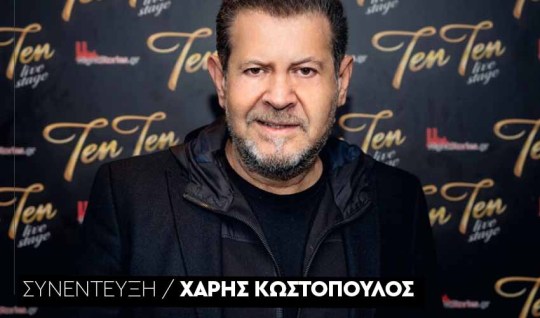
View On WordPress
0 notes
Text
Ivan Greko, Strat - AXARISTI Lyrics
Ivan Greko, Strat – AXARISTI (prod. by Dj PaCo) Lyrics Lyrics, Letra Black Check out the lyrics the full song with official video to listen to, Learn to sing this song. available for all countries Song lyrics not found: Submit the lyrics of this song.In the form! letras2.com Lyrics, Letras, Paroles, Deutsche, Letras, Testi,Тексты, Texty, Norske, Текстови, Versuri, Persian, Liricí, Lirik,…
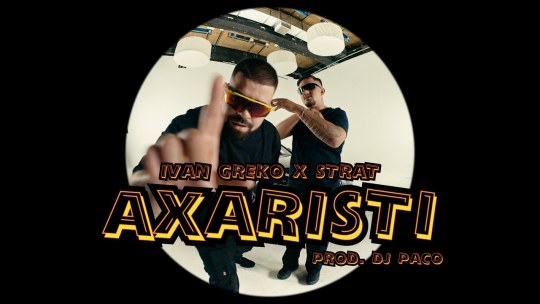
View On WordPress
0 notes
Text
Calabrian Greeks: Pocket of Hellenism in Southern Italy has Survived Millennia

There exists today a tiny enclave of Calabrian Greeks, Greek-speaking people in the Aspromonte Mountain region of Calabria that seem to have survived millennia…perhaps since the Ancient Greeks began colonizing Southern Italy in the 8th and 7th Centuries BC.

Italian as we know it today was not always spoken throughout Italy. The Italian language did not become the staple language until well into the end of the 19th Century during the process of Italian unification, or the Risorgimento.
Until then, the Italian peninsula was made up of Italo-Romance dialects and smaller minority languages that were differentiated by region and historical influences.

Once unification was complete, the Tuscan dialect was ushered into power as the official language of the Italian nation. This became the beginning of the modern end of the Greek language in Calabria, or what it is known today as Greko.
There exists today a tiny enclave of Greek-speaking people in the Aspromonte Mountain region of Calabria that seem to have survived millennia…perhaps since the Ancient Greeks began colonizing Southern Italy in the 8th and 7th Centuries BC.

Their language is called Greko. They survived empires, invasions, ecclesial schisms, dictators, nationalistic-inspired assimilation, and much more. Greko is a variety of the Greek language that has been separated from the rest of the Hellenic world for many centuries.
To help bring more perspective, Greek was the dominant language and ethnic element all throughout what we know today as Calabria, Basilicata, Puglia, and Eastern Sicily until the 14th Century.
Since then, the spread of Italo-Romance languages, along with geographical isolation from other Greek-speaking regions in Italy, caused the language to evolve on its own in Calabria. This resulted in a separate and unique variety of Greek that is different from what is spoken today in Puglia.

History of Calabrian Greeks
There are many theories or schools of thought regarding the origin of the Greko community in Calabria. Are they descendants of the Ancient Greeks who colonized Southern Italy? Are they remnants of the Byzantine presence in Southern Italy? Did their ancestors come in the 15th to 16th centuries from the Greek communities in the Aegean fleeing Ottoman invasion?
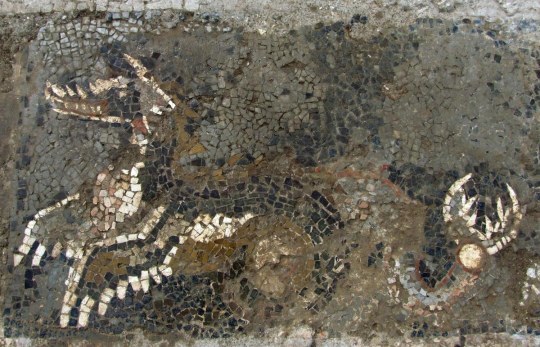
The best answers to all of those questions are yes, yes, and yes. This means that history has shown a continuous Greek presence in Calabria since antiquity. Even though different empires, governments, and invasions occurred in the region, the Greek language and identity seemed to have never ceased. Once the glorious days of Magna Graecia were over, there is evidence that shows that Greek continued to be spoken in Southern Italy during the Roman Empire.
Once the Roman Empire split into East (Byzantine) and West, Calabria saw Byzantine rule begin in the 5th Century. This lasted well into the 11th Century and reinforced the Greek language and identity in the region, as well as an affinity to Eastern Christianity.
What’s even more fascinating is that Calabria was apparently a Byzantine monastic hub of sorts. There were over 1,500 Byzantine monasteries in Calabria and people today still remember and adore those saints. Even though Byzantine rule ended in Calabria in the 11th Century, the Greek language continued to be spoken while gradually declining in the region with the spread of Latin and a process of Catholicization.
Follow us on Instagram, @calabria_mediterranea

#calabria#italy#italia#south italy#southern italy#greek#greek language#greek langblr#griko#mediterranean#greeks#magna graecia#minority languages#langblr#bova#gallicianò#bovesia#byzantine#byzantine empire#italian#history
72 notes
·
View notes
Text
Small Run Printing for Explicit Comics, a review of Ready Comics!
I know that the future of smutty publishing is real sketch in America right now, so I just wanted to put down info in case it's helpful for anyone at the moment or is perhaps relevant in the future.
At the end of last year, 2024, I was ready to self-publish a small run of my Critical Role wizard comic anthology, Who Else But You. There are many options for self-publishing comics, but the issue is that the middle one is entirely explicit, so I needed someone more specialized. I was running sales as a pre-order so I went into the purchase process without knowing how many copies I was actually going to need.
Thus my requirements were 18+ content, small run. And I found 2 printers in America who fit that requirement: Greko Printing, now known as Comix Wellspring and Ready Comics
Comix Wellspring: The slightly cheaper option, has a 25 volume moq, will not take custom sized books, but they have a lot (but not all) of available sizes. Their faq states that they will take adult material.
Ready Comics: Their moq is 10, they do custom sizes, they are slightly more expensive per book, but they also have a lot of fancy cover options. I had to message them, but they are fine with explicit material.
For a price comparison, I put in numbers for 8.5 x 11, 100 interior pages, all color, 100# for cover, 60# for interior, and that came out to be 11.44 for Greko, and 13.50 for Ready Comics. Printed proofs are $40 for greko, and $35 for Ready Comics but will vary based on book size.
In the end, I went with Ready Comics because WEBY was a weird size and I didn't want to do the extra work to make all the pages compliant with a new size, and I honestly was not sure I would hit the necessary 25 moq.
The Process
I've only done true POD printing before, upload a file get a book. Ready Comics was a much more hands on process.
I started asking for samples of their papers. There is a reserved page for ordering free samples, but it doesn't have anything on it. I had to tell them "what I was interested in" rather than there being an already put together package, which was weird. So I guessed at some things I might like. Their cover stock drop down was extensive. When I made my guesses, the ordering person told me that not all of the options were good for cover stock and recommended to me the best ones. (so why are those options all listed???) This sample pack was put together and shipped quickly.
I was getting a custom size, so I could not simply add something to the cart, I had to have it input special. This took MULTIPLE days. It was a little frustrating how long it took to make an invoice. I guess in reality it was probably 3 or 4, but I was IMPATIENT to start. However, I was allowed to only order a proof and not have a number for the final run beyond 10, their minimum, which was extremely helpful.
Once the invoice is placed, files can be uploaded. Weirdly, the files are put in as JPG, individual pages. You then deal with the layout person Alex. Alex was a delight. They were excited for some gay D&D content and were hugely helpful and patient. I was hoping to do a full wrap around cover of a solid piece of art, but because of the file set up process it can be difficult to make the wrap around completely line up so I ended up doing a solid spine. (I also think their spine calculator is a little off, overestimating the width).
I was absolutely getting a proof because I wanted these to be beautiful. It shipped a few days after the initial estimate. The colors were VIBRANT. I was flabbergasted. I did not expect it would print that well. (below, just look at them!)


HOWEVER, there were some issues. There was persistent banding throughout (top two images), and there was a weird line on the screen-toned pages at exactly the same place (bottom two images). It wasn't on EVERY screen-toned page, but it was present on many of them.




I contacted Alex who apologized and rushed a second proof.
The second proof arrived in about a week. It was also free. So this was some top tier service far as I was concerned. The banding disappeared, but the screen-tone line never fully vanished (top book is 1st proof, bottom book is second). Alex had the printers do testing on their end to see if they could get rid of it, and it was persistent. It was not a huge enough issue that I felt like I wanted to abandon the toning or this printer, but if I knew I were going to print toned stuff I would try a different printer just in case. Alex was prepared to do more testing but I also didn't want to run much further with the production timeline so we moved on. I will reiterate that all this work was done for a run of books that was, on paper, still listed at their minimum 10. So their customer service in this regard is amazing.

Also In the second proof, the colors on the cover were identical, it was lovely. HOWEVER, the colors on the inside were noticeably different. (top book is 1st proof, bottom book is 2nd).
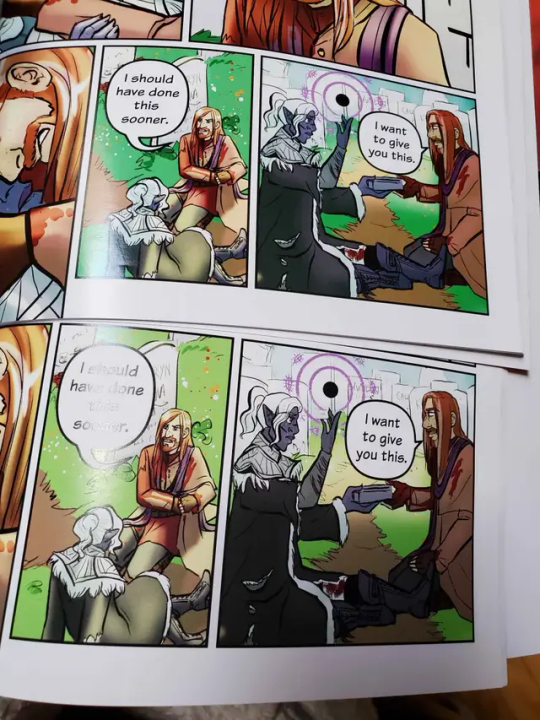
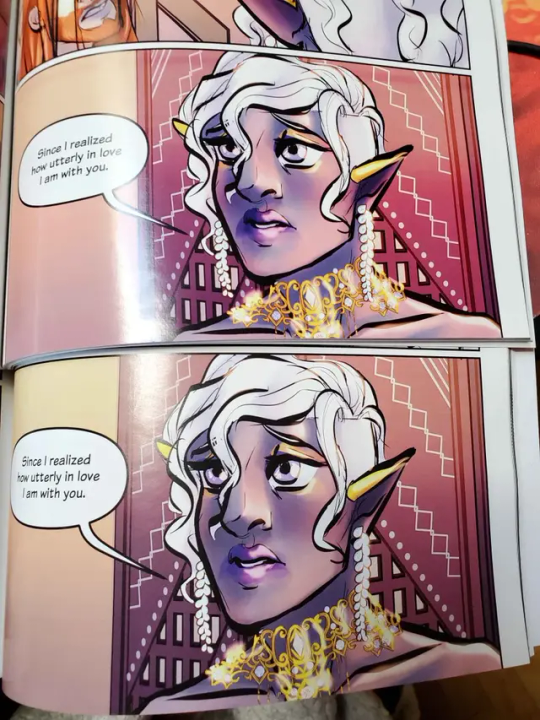
I asked about it and was told that they were transitioning to a new kind of printer that made things more high quality but less vibrant. And the second proof and full run were . . . good! Like these bottom images are still legitimately lovely. I just kind of wish I hadn't seen the color possibilities in the first proof because I loved them SO MUCH.
Final run: The run printed and shipped on time. I was invoiced for the full run more quickly than the initial run. The packaging was stellar. small wrapped batches of books inside boxes with styrafoam peanuts, inside a bigger box with more peanuts. The outer covers protected with a thick piece of paper so you can safely cut through the plastic. One book of the 30 had a small scratch on the cover when it arrived. And there's quite a few books that have a little wrinkle on the first page in the corner near the spine. Overall, the customer service here was top-notch, and I am pleased with my final book product.
Final thoughts: I looked further into pricing, and if you are getting a long book, the price differential between CW and RC gets LARGE. The customer service was good, even for a run that was on paper going to be 10 books. The product at the end was good, as long as you don't do screen tones. If you have a small to mid-sized book, say up to 150 pages or so, and need only 10 copies instead of 25, or have a weird size RC is am excellent option. I haven't tried CW printing at all, but I will be aiming for it when I have something longer to print, and as such will be making sure it fits one of their sizes out of the gate. (If you are looking for a larger run, that puts Keness into the run as well.)
Here's to hoping these will both still be options in the future. If you have any good or bad things to share about either company, let me know!
19 notes
·
View notes
Text
Πες το δυνατά πως πεθαίνεις για μένα❤️🔥
#spotify#music#γρεεκ ποστς#γρεεκ ταμπλρ#γρεεκ μπλογκ#greek tumblr#greek music#emmoniidea#έμμονη ιδέα#❤️#✨
16 notes
·
View notes
Note
Cuáles fueron los 5 personajes eliminados?
Solo por curiosidad 👀
Felix
Greko
Un moreno
Lautaro (Aun q este fue rediseñado)
Nova y Biel (Aun q se estan rediseñando o seran remplazados por otros)
Esos serian por el momento.. veremos si los ultimos 2 seran eliminados o rediseñados

21 notes
·
View notes
Text
Σε ψάχνω σαν ναρκωτικό....
#greek posts#γρεεκ μπλογκ#greek tumblr#γρεεκ ταμπλρ#γρεεκ τεξτ#greece#γρεεεκ#neyriasmenh#μου λειπεις#Spotify
3 notes
·
View notes
Text
intro!!
lovi, they/he, 19
this is my first intro post so bear w me!!
i'm t4t (mostly), bisexual, vers top (heavy dom lean), and in a committed polyamorous relationship for 5 years!
not showing my face but a bit about me! i am white with ionian heritage (respectfully sharing for the whites dni blogs) learning italian and asl (eventually greko) so if you know either, hmu i need a language buddy! i am pierced and tatted up >:P an aspiring tattoo artist and going into ancient history for an (eventual) phd, currently in undergrad.
i have autism, adhd, c-ptsd, and a chronic illness, so welcome neurodivergent disabled tranny fags!
POC friendly blog, FREE PALESTINE!!!!, blm, RACISTS AND TERFS DNI!!! we love our trans sisters
testosterone 9/27/23 :3
kinks
-cnc, uncensored rapeplay (consensual!!!) (tho im into pretending it's not lol)
- in the same vein, somno and free use
- petplay both ways (im the owner of a puppy and am a dogboy sometimes!)
- sadomasochism
- intox, mostly weed
- pissplay/omorashi
-musk
- lowkey into A/B/O.... sue me..
- getting into hypno
cant think of any more but i'll edit as needed
lims
- ageplay
- raceplay
- scat/vomit
- detrans
tags
- #lovi rambles : on original posts
- #lovi pix : on any pictures i post
editing as needed
DNI
- racists, misogynists, homophobes, transphobes, terfs, zionists, ableists, beastiality, pedos
- cishets... sorry fam... especially cishet dom men lol cant stand them sometimes
-
-
feel free to DM me or send asks! looking for (mostly) trannies to help me gangbang my bf @sleepypuppy420 so doms hmu!! also if u r a t4t petplay couple PLEASE hit me up so we can organize a playdate for our pups <3 love watching sub on sub
also looking for friends so don't be shy
8 notes
·
View notes
Text
Since all my OCs come from different corners of the Spiral and are of varying mythological beings, I decided to compile a list of both their origins and occupations!
(Sidenote: some details about certain worlds! Those in purple belong or were reimagined by me, those in green are just canon worlds renamed by me, and those in red belong to @prince-of-khrysalis and @brewbellwizardry!)
Caelum: Eva (Filipina-Palestinian-Calé/angel; astralmancy/Eden caretaker)
Lemuria:
Kalpana (Nepali/cthulhi; spatiomancy/avatar)
David (Jewish American/lich; chronomancy/conman)
Milagro (Dominican/sylph; thaumaturgy/hoop aerialist)
Heroica:
Vontae (Black American; physical, hero trainee)
Iina (Navajo; mental, fashion major)
Airam (Nicaraguan-American; almighty, freelance hacker)
Binna (Korean-American/A.I.; reality/idol)
Melanie (White American/virus; reality/villain sidekick)
Kamiyah (Black-Ecuadorian; disempowered, street racer)
Empyrea:
Eranuhi (Armenian Lom/pixie; solarmancy/Miracle Mitch's assistant)
İnayət (Azerbaijani/pig; divination/keytarist)
Shushana (Georgian Jewish/alphoi; lunarmancy/singer)
Grizzleheim:
K'ila (Greenlandic Inuit/snow angel; thaumaturgy/martyr)
Greko (Finnish/näkki; privateer/Ironclaws leader)
Cedine (Afro Norwegian; musketeer, Wolf ranger)
Othi (Swedish Romani; swashbuckler, Splithoofs fighter)
Sarai (Danish Jewish; buccaneer, wanderer)
Darkmoor:
Sevastjan (Estonian/werewolf; solarmancy/W.C. Forces guardsman)
Vidas (Lithuanian, vampire bat; thief)
Līga (Latvian/gargoyle; chronomancy/bounty hunter)
Greeta (Estonian; necromancy, Rickoyoto student)
Polaris:
Prokhor (Russian; divination, Ravenwood student)
Hadria (French Algerian, arctic hare; La Révolution lieutenant)
Théane (Monégasque/matagot; conjuration/bartender)
Hilol (Uzbek, courtesan)
Nima (Buryat, half-polar bear; cigarette boy)
Gamassa:
Priscila (Cuban/avialtri; umbramancy/researcher)
Jacinto (Afro Venezuelan/changeling; conjuration/Arcana student)
Roshan (Iranian, half-bunny; ex maiden-in-training)
Yuuto (Japanese/cambion; mysticism/hitman)
Karamelle:
Goldie (Austrian Jewish; conjuration, Ravenwood student)
Elise (Papuan/gnome; theurgy/figure skater)
Aulia (Indonesian, half-raccoon; housespouse)
Rayner (German Turk/elf; lunarmancy/doctor)
Avalon:
Vaino (Welsh Romani; pyromancy, Ravenwood student)
Carmel (Welsh Jewish; necromancy, alchemist)
Meriful (Scottish Romani/anthusiai; necromancy/druid)
Darina (Afro Irish, half-deer; budding writer)
Marleybone:
Sestiva (Irish; necromancy, Ravenwood student)
Zakhi (Afro Scottish; buccaneer, Shatterhands tank)
Trainet (Scottish Romani, mouse; Quarrel Mob moll)
Wysteria:
Bisera (Bulgarian Turk; thaumaturgy, assitant librarian)
Peritz (Jewish Canadian; theurgy, Pigswick student)
Monquista:
Zãne (Basque/aidegatxo; divination/smuggler)
Yeniel (Afro Spanish/anjana; theurgy/healer)
Jamilla (Portuguese Jewish/anjana; mysticism/astrologist)
Cosme (Spanish; stellarmancy, aristocrat)
Wizard City:
Tiena (English Romani; lunarmancy/handyman)
Alura (Black Canadian; conjuration/W.C. Forces artificer)
Epimetej (Bosnian/half-draconian; pyromancy/Ravenwood student)
Coloratura:
Ithal (Irish Romani; sorcery, W.C. Forces knight)
Cherie (Haitian/elf; spatiomancy/concubine)
Zulekha (Lebanese/ghost; chronomancy/ex-concubine)
Kinna (Welsh; pyromancy, head priestess)
Dragonspyre:
Ivan (Serbian; necromancy, Dragonhorn Order knight)
Uana (Romanian; divination, Storm Department major)
Yakov (Bulgarian Jewish; thaumaturgy, Chivalric Forces trainee)
Mateja (Slovenian; pyromancy, Dragonhorn Order knight)
Qendr��k (Albanian Ashkali; conjuration, Myth Department major)
Eldra (Croatian Romani; theurgy, Life Department major)
Andrej (Macedonian; sorcery, Balance Department major)
Vitalia:
Ariele (Italian Jewish‐Tunisian/half-guinea pig; dualism/Shatterhands bag-boy)
Lereia (Italian Jewish-Tunisian, porcelain doll; hitch-hiker)
Luretta (Sicilian Moroccan, half-unicorn; Resistance spy)
Valente (Genovese, unicorn; Armada soldier)
Aquila:
Titania (Greek; privateer, Shatterhands 2nd-in-command)
Zinon (Greek/elf; mysticism/wanderer)
Spisene (Greek Romani; divination, Arcadia student)
Taysa (Afro Greek/asteriai; stellarmancy/Arcadia student)
Mirage:
Yousef (Saudi/vampire; thaumaturgy/House of Tabbi captain)
Wafae (Afro-Omani/avialtri; spatiomancy/wanderer)
Ku-aya (Iraqi/udug; umbramancy/Silenus' ward)
Krokotopia:
Meresamun (Nubian; chronomancy, Temple of Balance priestess)
Kreianos (Nubian/half-krok; pyromancy/Medjai commander)
Fibruniyah (Copt/undine; divination/ferrywoman)
Wagguten (Berber; sorcery, Temple of Balance trainee)
Zafaria:
Resego (Tswanan; necromancy, Arcanum researcher)
Umklomelo (Zulu/tikoloshe; necromancy/blacksmith)
Mooshu:
Dechen (Tibetan; theurgy, Ravenwood student)
Choua (Hmong; mysticism, Shatterhands witch)
Nengmei (Chinese/huli jing; pyromancy/bride-to-be)
Zayaa (Mongolian/frog; thaumaturgy/Shangri Baa apprentice)
Rajah:
Fulki (Santhal/guhyaka; conjuration/princess)
Zeenat (Pakistani/genie; miraclism/Fulki's contractor)
Yago:
Luntian (Bisayan/kataw; lunarmancy/babylan)
Liwliwa (Iloco/diwata; stellarmancy/loner)
Wallaru: Jiemba (Wiradjuri/mimih; solarmancy/Didgeri dragon caretaker)
Celestia:
Aroha (Maori/ice construct; thaumaturgy/Ravenwood student)
Fielea (Tongan/swan maiden; astralmancy/Eight Legs agent)
Mikaere (Maori/lunari; spatiomancy/bodyguard)
Skull Island:
Julien (White Caribbean; swashbuckler, Shatterhands captain)
Haydée (Puerto Rican/elf; sorcery/Gravulum Order researcher)
Aviarios:
Daniel (Jewish American; underground fighter)
Lázaro (Cuban-American/cagueiro; lunarmancy/private eye)
Audélia (Jewish American, half-canary; tabloid reporter)
Tiara (Japanese-Chumash, ladybug; aspiring starlet)
Cool Ranch:
Otaktay (Lakota; musketeer, Shatterhands sniper)
Jewel (Black American, half ball-tailed cat; magician)
Basilio (Mexican, coyote; sheriff)
Heyra (Mexican/duende; solarmancy/amateur monstrologist)
Coatlán:
Tlacelel (Nahua/nagual; chronomancy/bounty hunter)
Nayeli (Zapotec/cactus dryad; sorcery/photomancer)
Melodioso:
Odalis (Panamanian/myrmeki; theurgy/bride)
Yasmin (Brazilian/boiúna; sorcery/mercenary)
Painé (Chilean/carbunclo; astralmancy/bard)
El Dorado:
Raymundo (Colombian/solari; solarmancy/prince)
Yadira (Colombian/stellari; stellarmancy/princess)
Khrysalis:
Nona (Assyrian/pyros; stellarmancy/shadow hunter)
Isidora (Guatemalan/squirrel; conjuration/war messenger)
Shay (Irish Jewish/sea slug; pyromancy/code breaker)
InvictaMane: Kem (English Romani/incubus; theurgist/court jester)
6 notes
·
View notes
Text
I've started listening to legends of avantris after a month of consuming their shorts on YouTube.
We shall see if this one sticks.
0 notes
Text
Explore Greece healthcare for Indian investors with the Golden Visa in 2025. Learn about public & private care, emergencies, and more with Greko India’s expert guide.
#greece#greecepr#greecegoldenvisa#grekoindia#eu residency#healthcare#thessaloniki#greekresidency#greek posts
0 notes
Text
Ivan Greko: Το μήνυμά του μέσα από τη φυλακή – «Ευχαριστώ τους fans και όσους με στηρίζουν»
Το μήνυμα ανέβασε φίλος του τράπερ σε story στον λογαριασμό του στο Instagram Ο Ivan Greko ο οποίος είναι προφυλακισμένος για την υπόθεση της απαγωγής του 24χρονου γιου επιχειρηματία, στέλνει το δικό του μήνυμα στους υποστηρικτές του από το κελί της φυλακής. Ο τράπερ έχει απαρνηθεί όλες τις κατηγορίες σε βάρος του και στο φωνητικό μήνυμα που στέλνει φαίνεται να προμηνύει κάτι το οποίο θα…
0 notes
Text

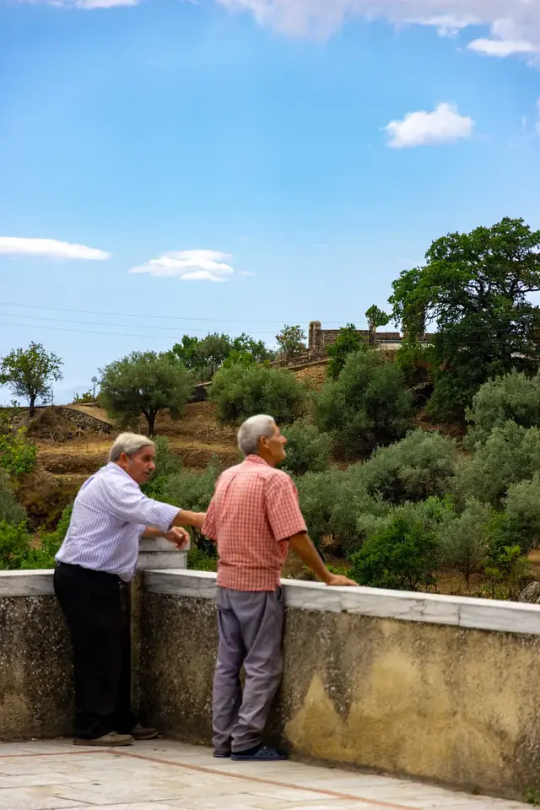
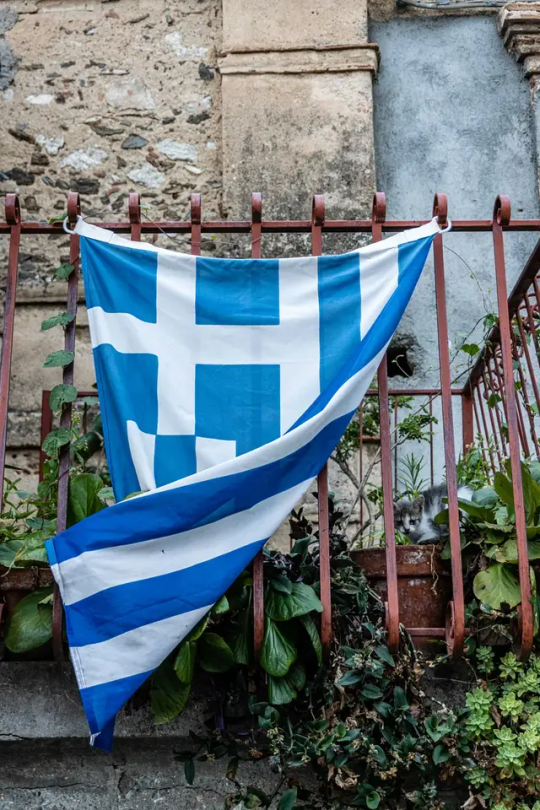
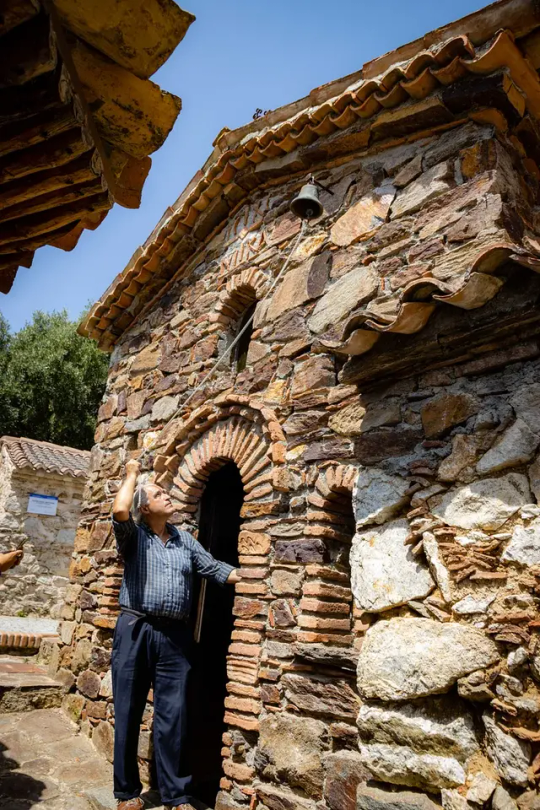

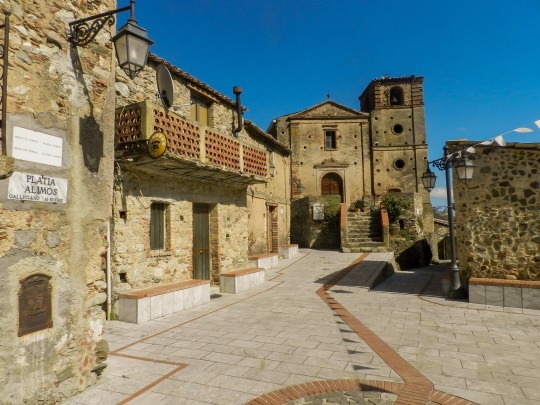

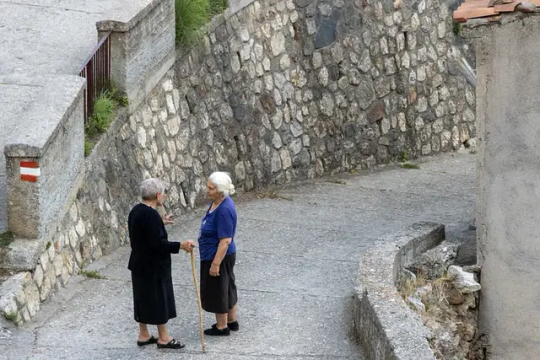
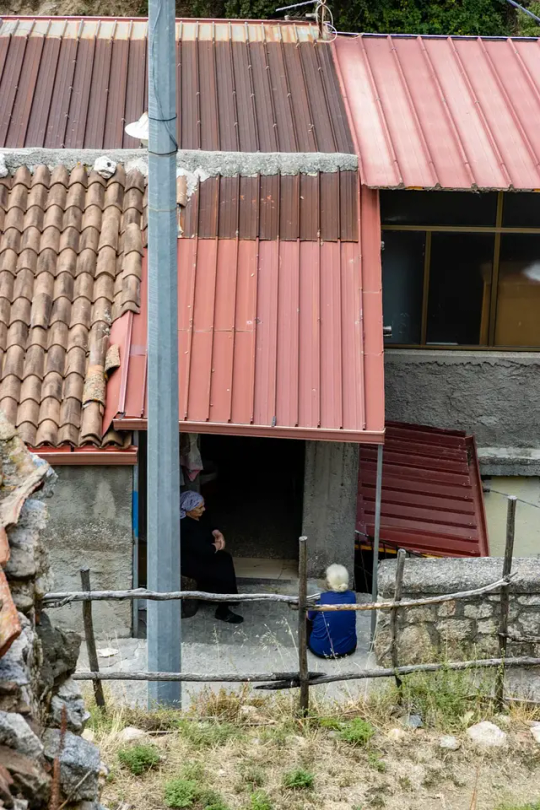

Gallicianò, Calabria, Italy
Gallicianò, in Calabria, is the only remaining original Greko-speaking settlement in the Aspromonte Mountains. Locals have not been forced to move or resettle on the coast like other Greko settlements.
Italian as we know it today was not always spoken throughout Italy. The Italian language did not become the staple language until well into the end of the 19th Century during the process of Italian unification, or the Risorgimento. Until then, the Italian peninsula was made up of Italo-Romance dialects and smaller minority languages that were differentiated by region and historical influences. Once unification was complete, the Tuscan dialect was ushered into power as the official language of the Italian nation. This became the beginning of the modern end of the Greek language in Calabria, or what it is known today as Griko.
WHY SHOULD IT MATTER?
There exists today a tiny enclave of Greek-speaking people in the Aspromonte Mountain region of Reggio Calabria that seem to have survived millennia...perhaps since the Ancient Greeks began colonizing Southern Italy in the 8th and 7th Centuries BC. Their language is called Griko. They survived empires, invasions, ecclesial schisms, dictators, nationalistic-inspired assimilation, and much more. Griko is a variety of the Greek language that has been separated from the rest of the Hellenic world for many centuries.
To help bring more perspective, Greek was the dominant language and ethnic element all throughout what we know today as Calabria, Puglia, and Eastern Sicily until the 14th Century. Since then, the spread of Italo-Romance languages,
along with geographical isolation from other Greek-speaking regions in Italy, caused the language to evolve on its own in Calabria. This resulted in a separate and unique variety of Greek that is different from what is spoken today in Puglia.
A BRIEF HISTORY
The struggle for the survival of Hellenism after antiquity is typically associated with Ottoman occupation in the Eastern Mediterranean, not the Italian peninsula. Few history books I read growing up ever mentioned any type of Greek history or presence in Italy after the glorious era of Magna Graecia. But to dig a little deeper means that we must look at what happened to this ethno-linguistic group after antiquity.
There are many theories or schools of thought regarding the origin of the Greko community in Calabria. Are they descendants of the Ancient Greeks who colonized Southern Italy? Are they remnants of the Byzantine presence in Southern Italy? Did their ancestors come in the 15th-16th Centuries from the Greek communities in the Aegean fleeing Ottoman invasion? The best answers to all of those questions are yes, yes, and yes. This means that history has shown a continuous Greek presence in Calabria since antiquity. Even though different empires, governments, and invasions occurred in the region, the Greek language and identity seemed to have
never ceased. Once the glorious days of Magna Graecia were over, there is evidence that shows that Greek continued to be spoken in Southern Italy during the Roman Empire. Once the Roman Empire split into East (Byzantine) and West, Calabria saw Byzantine rule begin in the 5th Century. This lasted well into the 11th Century and reinforced the Greek language and identity in the region as well as an affinity to Eastern Christianity.
What's even more fascinating is that Calabria was apparently a Byzantine monastic hub of sorts. There were over 1,500 Byzantine monasteries in Calabria and people today still remember and adore those saints. Even though Byzantine rule ended in Calabria in the 11th Century, the Greek language continued to be spoken while gradually declining in the region with the spread of Latin and a process of Catholicization. The modern-day commune of Bova may give some insight into the history of the language in the region. In subsequent centuries after Byzantine rule, Bova became the heart of Greek culture in Calabria as well as the seat of the Greek church in the region. It is important to note that the liturgical language of the region was Greek until 1572 when Bova was the last in the region to transition to Latin.
Not much is known of what took place between the end of the 16th Century and the Italian Risorgimento in the 19th Century, but there are a couple of details to mention. First, due to multiple invasions and piracy, much of Calabria's coastal population moved into the mountainous interior. According to Olimpia, the isolation and geography of the Greko communities in Calabria definitely worked to the advantage of preserving the language over centuries. We can also possibly conclude that occasional migrations of Greeks to Calabria from the Aegean could have taken place in the 16th and 17th Centuries in response to the Ottoman invasion. And according to Tito, there is even evidence that a 17th Century mayor of Bova wrote poems in Griko.
Even though the Greek language had already been in great decline since the departure of the Byzantine Empire in Southern Italy and the spread of Catholicism with Latin liturgy, the language seemed to have quietly survived several centuries in the mountains of Calabria.
TODAY
Once the Risorgimento finally took place, the modern Italian language finally arrived in Calabria at the end of the 19th Century. The Italian language that arrived was essentially the Tuscan dialect that was chosen as the national language. The Italian language has only been spoken in Calabria for around 100 years.
Due to the complexities of the Risorgimento and the new multifaceted Italian state (Northern Italy vs. Southern Italy), there was a new wave of mindsets that was ushered into Calabria and surrounding Southern Italian regions. This deeply affected the Greko community and language.
The shame and embarrassment of speaking Griko began in the 20th Century and it intensified during the Fascist movement. The mentality of 'we must be Italians' affected the way the Griko community raised their children.
Until the 1960s, there were no roads, electricity, or plumbing to most of the Greko villages. When the schools arrived, Italian was the taught language and Greko was learned at home. There was no government assistance back then for the Greko language. Italian government did not care about this language.
Furthermore, unlike other minority languages in Northern Italy, the Greko community was not located in a border region. The Italian government did not pay much attention to the Greko language or did not help preserve it also because its speakers did not pose a threat of secession or independence much like the Northern Italian minorities or the Basques and Catalans of Spain.
All of these factors have led to the current status of the Greko language as it remains in severe decline and near extinction.
Written by John Kazaklis
Photos by Giuseppe Cillis
Follow us on Instagram, @calabria_mediterranea
#Gallicianò#calabria#italy#italia#south italy#southern italy#mediterranean#greek#byzantine#byzantine art#griko#italian#landscape#italian landscape#europe#landscapes#mountains#mountainscape#mediterranean sea#seascape
35 notes
·
View notes
Text
Rrëmbehet dhe torturohet për 5 orë djali i biznesmenit në Athinë
Djali i një biznesmeni në Athinë u rrëmbye në mënyrë të dhunshme dhe u mbajt peng për 5 orë nga katër burra, mes të cilëve edhe këngëtari i njohur Ivan Greko. Katër autorët e krimit, të cilët e rrëmbyen dhe e torturuan 24-vjeçarin duke i zhvatur një shumë të madhe parash, u arrestuan nga oficerët e Drejtorisë Kundër Krimit të Organizuar, pas një operacioni të realizuar në tri lokacione të…
0 notes